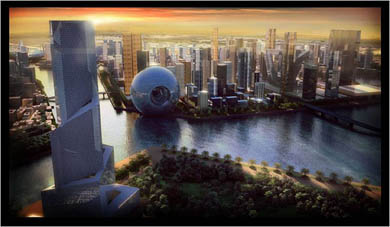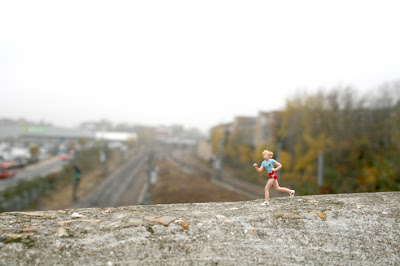During this year's
Game for Change conference, quick thinker and creative mind Eric Zimmerman dropped a new concept on the audience, "Maybe, ", he suggested, "We are living in the
Ludic Age ."
His point was well received by a room full of people hoping to change the world through play and games. And his concept made sense on the surface. The industrial age led to the information age and now that we are drowning in all that information and technology, maybe games were helping us figure out how to deal with it all. Whether we had entered the age of games or not, it seemed plausible to at least hope we were.
As I work through the question of "What makes a place fun?" I find another reason to give Eric's idea further consideration–the ebb and flow of the romantic and rationalist tendencies in culture.
If we think about Romanticism as reading truth in the visible and the human response to that truth, contrasted by the Rationalist tendency to seek natural truth beyond the surface, in the observable matter of the universe, then we set up the dichotomy that sticks with us to this day. Is truth empirical science or human experience? The Romantic movement is most closely associated with the an 19th Century reaction to the Rational efforts of the industrial age. Faced with the ugly truth of people treated like parts in a machine and tied to a ticking clock, the Romantics were concerned with the shape of experience and the power of narrative. The Romantic and Rational have pushed back and forth ever since.
Today, the Information Age, the Digital Age, is another Rationalist turn, whereby computers are seen as the basis for encoding all experience as binary quanta. Perhaps no one has voiced an objection to this point-of-view more eloquently than computer pioneer Joseph Weizenbaum when he wrote:
"Beginning perhaps with Francis Bacon's misreading of the genuine
promise of science, man has been seduced into wishing and working for
the establishment of an age of rationality, but with his vision of
rationality tragically twisted so as to equate it with logicality. Thus
have we very nearly come to the point where almost every genuine human
dilemma is seen as a mere paradox, as a merely apparent contradiction
that could be untangled by judicious applications of cold logic derived
from a higher standpoint Even murderous wars have come to perceived as
mere problems to be solved by hordes of professional problem solvers." (Quote in The New Media Reader, p374)
This from the man that programmed
ELIZA a piece of software that famously simulated a psychologist. He was deeply concerned that we trusted our rational mode too much, up to and including considering his computer science experiment a viable tool for helping people with their psychological problems. His call for a new humanism stopped short of a Romantic point of view, but its decisive criticism of the Rational opens the door for an alternative.
Living in the shadow of Weizenbaum, as it were, perhaps now we see a Romantic turn, a return to the idea that play, imagination, creativity and sublime human experience matter more than the output of a computer. Perhaps, the "Ludic Age" is really a response to the Rationalism of the Information Age.
Turning to architecture, it's hard to argue that the super stars of architectural design have not already made the shift back to the Romantic mode. Koolhaas' Dubai projects can stand for the time and speak to a sensibility more Ruskin than van der Rohe, more play than work and more ludic than information. In short, more fun.
Posted by email from buzzcut blog (posterous)




